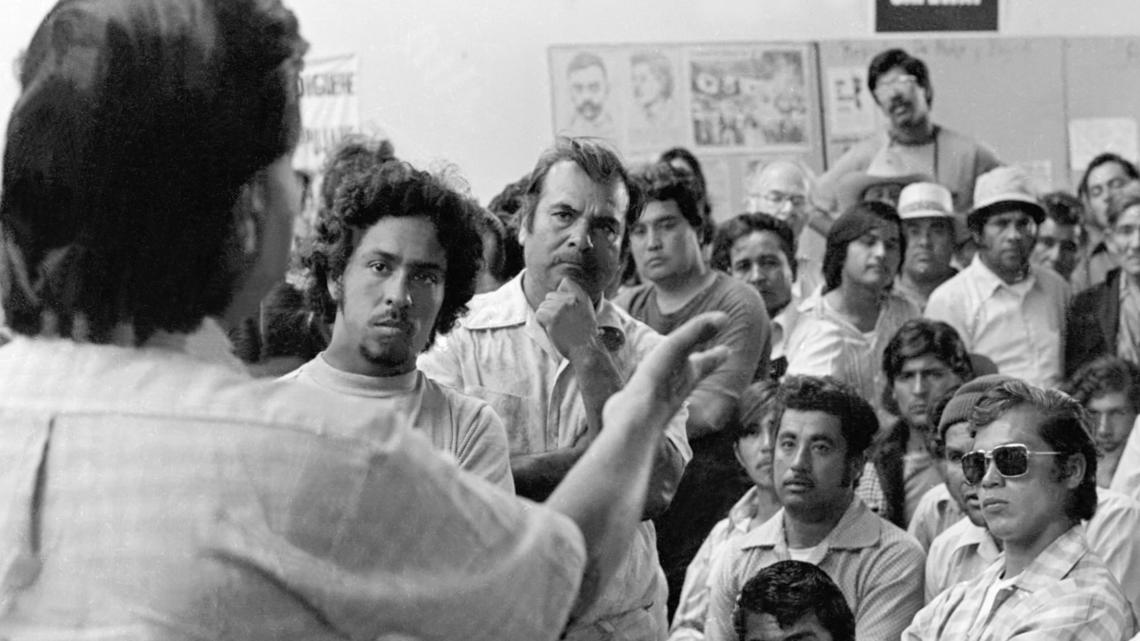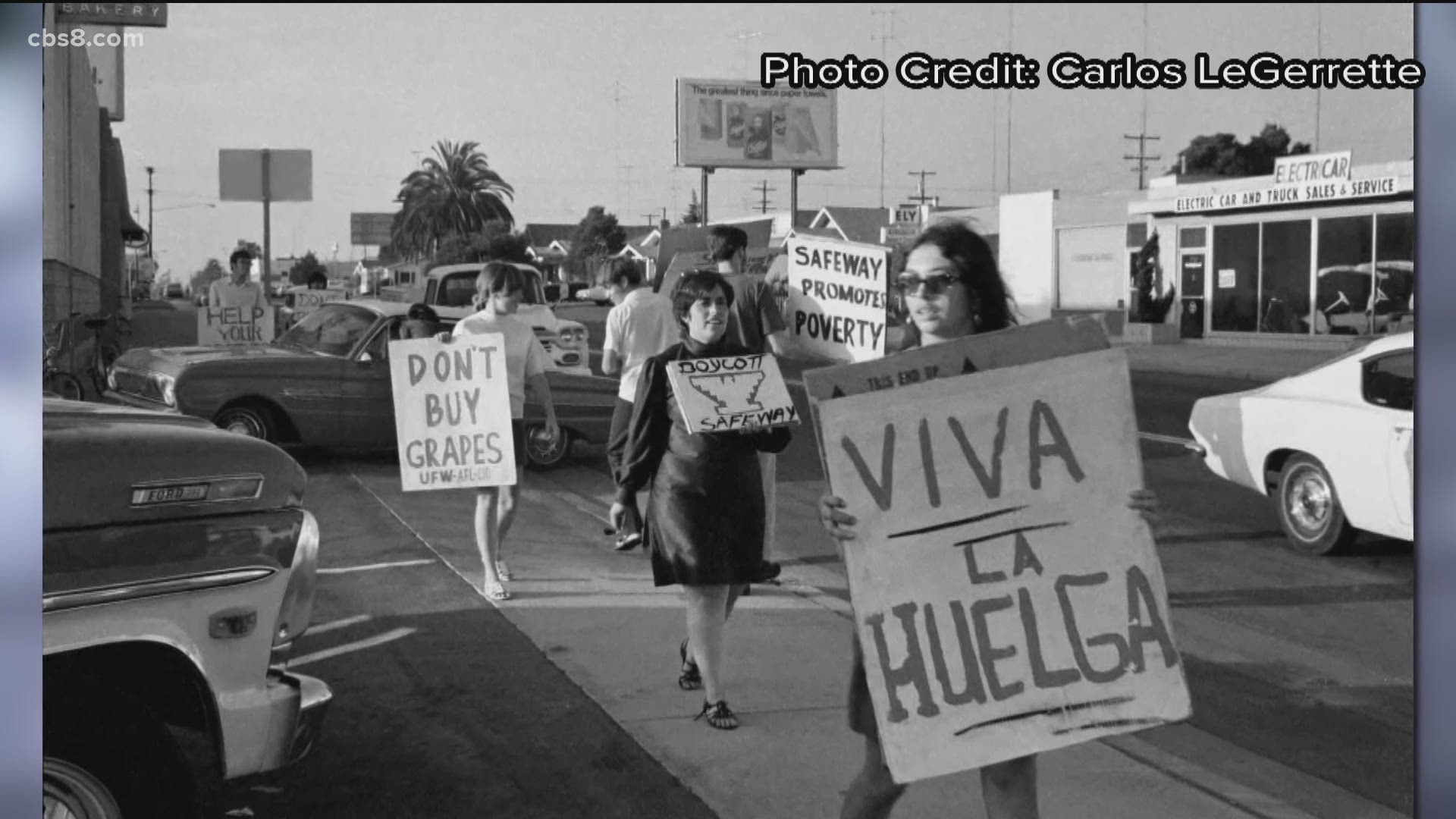SAN DIEGO — The 1960s were a tumultuous time in the United States.
Movements, demonstrations and civil unrest defined the decade and captivated national audiences. National leaders moved to the forefront of these movements. Leaders such as Martin Luther King Jr., Gloria Steinem and César Chávez, organized people, led marches and boycotts and ultimately shaped real change for the people they represented.
“When we drive from San Diego to Delano, we would see the farmworkers in the field bending over and doing that hard work,” Linda Legerrette, a former close associate to Chávez, said. “To see poor people who put the food on our tables being treated like they didn’t exist, without respect, without dignity, with terrible pay.”
In 1968, Linda and her now-husband, Carlos, were just college students at SDSU. They were swept up in the activism of the time and became closely associated with the United Farmworkers Movement. An organization that worked to improve the deplorable working conditions for farmworkers in Central California, the face of the movement: César Chávez.


“He was very demanding on us as he was on himself,” Carlos Legerrette said. “He taught by example. So those things really meant a lot to us.”
Carlos and Linda moved up to the UFW headquarters in Delano, working closely with Chávez personally. Carlos became his assistant, and as a photographer, was able to capture the civil rights leader candidly.
“This common man, who was so extremely complex but so intelligent,” Carlos said. “He was able to get these complex visions that he had into plain language that everybody understood.”
Today, many things are named after Chávez, such as the street that runs through Barrio Logan. And, on this day, March 31, when he would have turned 94 years old, the United States celebrates César Chávez Day, to reflect on a man who fought tooth and nail for equality and rights for Latinos and other oppressed people.


“It’s a day of reflection on the one hand, and it’s a day for me to remember that there’s still a lot of work to be done,” Linda said.
“We’re planting in these beautiful young people, that the legacy of César Chávez, of nonviolence and respect.”
WATCH: Cesar Chavez marches from San Ysidro POE to Salinas to Delano, California in 1975

